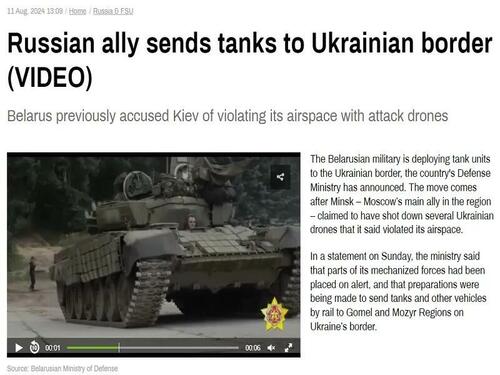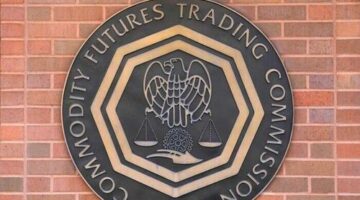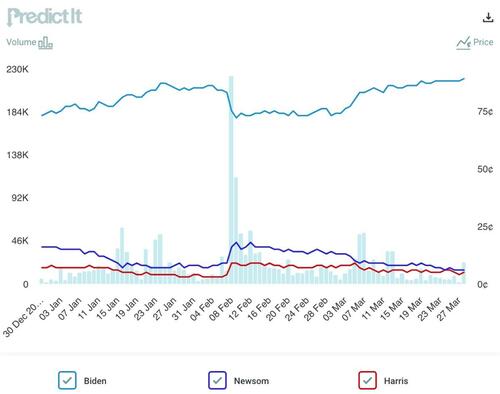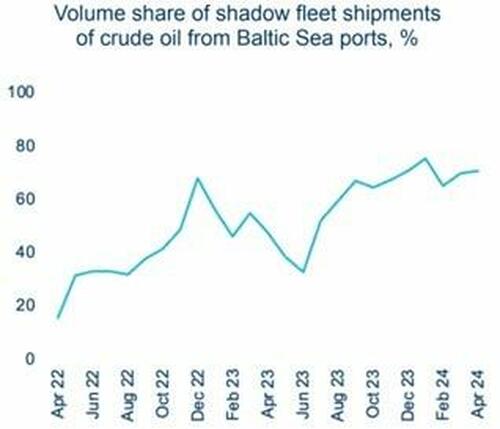
What’s Behind Belarus’ Military Buildup Along The Ukrainian Border?
Authored by Andrew Korybko via substack,
Belarus announced late last week that it shot down several Ukrainian drones over its airspace, which it later discovered were full of NATO electronics, and subsequently decided to strengthen defenses along its southern border.
It’s also considering shutting down the Ukrainian Embassy in Minsk too. This follows their border crisis from a little more than a month ago after Ukraine’s military buildup back then and comes amidst Ukraine’s sneak attack against Russia’s Kursk Region, both of which were analyzed below:
* 30 June: “Keep An Eye On Ukraine’s Military Buildup Along The Belarusian Border”
* 8 August: “Five Lessons For Russia To Learn From Ukraine’s Sneak Attack Against Kursk Region”
* 10 August: “Last Year’s Pentagon Leaks Proved That Zelensky Was Plotting To Invade Russia Since January 2023”
In brief, the first crisis de-escalated after Kiev reportedly removed its troops first and then Minsk naively assumed that its neighbor thus had no aggressive intentions so it followed suit, while the second is the natural culmination of those aforesaid attacks. It should also be said that Belarus’ decision to de-escalate border tensions with Ukraine inadvertently freed up more of the latter’s forces for invading Russia even though that’s of course not what Lukashenko intended to have happen.
The fog of war makes it difficult to accurately assess the situation in Kursk Region, but most reports indicate that Ukraine’s offensive has halted and that it might be digging in for the long run. This adds context to its drone incursions over Belarus by suggesting that its General Staff could be probing for weaknesses all along the Union State’s border. The swiftness with which Ukraine broke through the Russian border might embolden it to try replicating this against Belarus as a diversionary tactic.
It’s premature to jump to conclusions, but that could further stretch Russia’s forces and help advance Ukraine’s goal of coercing its foe to transfer some of them from the Donbass front if it happens, which is widely thought to be the primary objective behind its sneak attack against Kursk Region. Likewise, Ukraine’s reported probing into Belgorod Region and its latest attack against the Zaporozhye Nuclear Power Plant (ZNPP) complement these efforts, all of which aim to keep Russian on edge and guessing.
The military-strategic situation is curiously similar to the days before Ukraine’s ultimately failed counteroffensive last summer when “The Union State Expected That The NATO-Russian Proxy War Will Expand” to possibility include Belarus, Moldova, and/or Russia’s pre-2014 territory. That didn’t happen as is now known, perhaps due to urgently improved border defenses at the time that might have since been scaled back due to complacency, but Ukraine certainly seems to be seriously considering it now.
As for the Moldovan option, it’s always been a wildcard that Kiev has thus far held off on playing despite prior Russian concerns, though that doesn’t mean that it should be forgotten about. One argument against expanding the conflict to that front is that it could inadvertently stretch Ukraine’s own forces even further and thus facilitate a possible Russian breakthrough in Donbass, which is precisely what Ukraine is trying to prevent or delay as long as possible through various means.
The same goes for attacking Belarus or launching another sneak attack against a different region within Russia’s pre-2014 territory, let alone all at the same time, whereas more attacks against the ZNPP wouldn’t entail the same military risks even though the environmental ones are much greater. At the same time, however, the Belarusian option might be more enticing for Ukraine to contemplate than any other when recalling what Italy’s La Repubblica newspaper reported earlier in the spring.
They claimed that Belarus’ direct involvement in the conflict would trigger the tripwire for a conventional NATO intervention, which could relieve pressure on Kiev while provoking a Cuban-like brinksmanship crisis that might see Russia freeze its advance in Donbass. Of course, neither can be taken for granted: NATO might decline to conventionally intervene if Ukraine provokes Belarus to respond, and Russia might not freeze its offensive in Donbass as part of some mutual de-escalation deal with NATO.
Nevertheless, Kiev might still gamble that it can get NATO to directly intervene on its side by provoking Belarus to respond, including through a potentially forthcoming conventional attack. The conflict’s military-strategic dynamics continue to favor Russia even in spite of what’s happening in Kursk Region so Ukraine might soon become desperate enough to implement its own “Samson Option” of trying to expand the conflict in every direction possible if its leadership comes to believe that defeat is inevitable.
In that scenario, it might also finally play the Moldovan wildcard and attempt Kursk-like sneak attacks against other Russian border regions, though even then it couldn’t be taken for granted that NATO would conventionally intervene or that their intervention would result in preventing Ukraine’s defeat. Moreover, the US might calculate that frantically trying to expand the conflict in every direction possible isn’t in its interests, in which case it could try to dissuade Ukraine of this or covertly stop it if it still does.
In connection with that, it’s relevant to reference Bloomberg’s hit piece from earlier this month against Zelensky’s hawkish chief of staff Andrey Yermak, which this analysis here argues could be the beginning of an American campaign for weakening that grey cardinal’s influence. This radical ideologue is a major obstacle to the resumption of peace talks and he might even be the one who put Zelensky up to invading Russia. So long as he retains the president’s ear, then Ukraine’s “Samson Option” can’t ever be ruled out.
It therefore follows that the US might want to drive a wedge between them in order to reduce the chances that Yermak convinces Zelensky to go all out if he believes that defeat is inevitable, and thus risk provoking a NATO-Russian hot war, instead of resuming peace talks in that event. After all, Ukraine might have wanted to expand the conflict into Belarus, Moldova, and/or Russia’s pre-2014 territory as part of its counteroffensive, but the US could have advised against it out of an abundance of caution.
Last year would have been a much better time to do that than now when Ukraine still had tens of thousands more troops, hundreds of more Western vehicles, and much higher morale. Going this route one year later after so many losses doesn’t make military-strategic sense except if Ukraine is seriously flirting with the “Samson Option”, which the US might either begrudgingly agree to go along with or might soon intervene behind the scenes to stop in some way if it’s against that happening.
This insight enables observers to better understand Belarus’ military buildup along the border, which is a reaction to Ukraine’s latest drone incursions. Ukraine carried them out in order to prompt this response from Belarus as Yermak-advised Zelensky considers whether it’s worth expanding the conflict in the hopes that NATO would then conventionally intervene in his support should that happen. Whatever he decides to do will have an outsized influence on events as everything rapidly approaches the end game.
Loading…
Originally Posted at; https://www.zerohedge.com//
Stay Updated with news.freeptomaineradio.com’s Daily Newsletter
Stay informed! Subscribe to our daily newsletter to receive updates on our latest blog posts directly in your inbox. Don’t let important information get buried by big tech.
Current subscribers:








